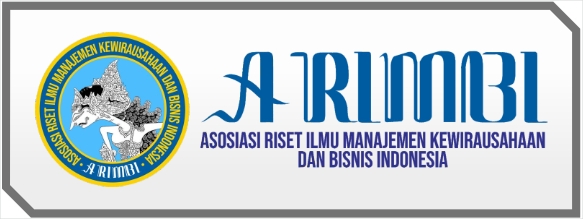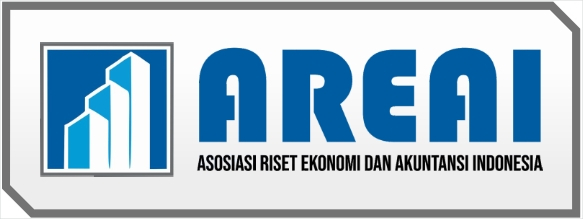Pengaruh Fasilitas Kerja Dan Masa Kerja Terhadap Kinerja Aparatur Sipil Negara Di Kecamatan Cipari Kabupaten Cilacap
DOI:
https://doi.org/10.59581/jmki-widyakarya.v3i1.4596Keywords:
Work Facilities, Work Period, Performance of State Civil ApparatusAbstract
Government bureaucracy must be managed based on the principles of good and professional governance. Bureaucracy must fully serve the interests of the people and work to provide excellent, transparent, accountable services, and be free from Corruption, Collusion, and Nepotism (KKN) practices. This spirit is the basis for the implementation of government bureaucratic reform in Indonesia. Sub-districts as organizations that provide direct services also need to be supported by complete work facilities because these work facilities are supporting factors for the smooth running of tasks carried out, so that work can be done as expected.
Changes in regional government laws clearly affect government organizations including Sub-districts
The research method used in this study is a descriptive survey method. The research design uses a quantitative method. The aspects studied in this study include variables (X1) namely work facilities, variables (X2) length of service with variables (Y) namely performance. Data collection tools use observation and questionnaires.
The conclusion is: 1. Work facilities tend to be high and ASN performance is very high, so that work facilities have a high influence on ASN performance, meaning that if work facilities are high then ASN performance is very high, while the low indicator in the work facility variable is that the work process should be carried out effectively; 2. Work period tends to be high and ASN performance is very high, so that work period has a high influence on ASN performance, meaning that if work period is high then ASN performance is very high, while the low indicator in the work period variable is that interns with a work period of 0-12 months need to improve the quality of their work; and 3. Work facilities and work period tend to be high and ASN performance is very high, so that work facilities and work period have a high influence on ASN performance, meaning that if work facilities and work period are high then ASN performance is very high thus the proposed hypothesis can be accepted. Meanwhile, the low indicator in the ASN performance variable is that innovation should be carried out in various work programs.
References
Baharun, H., Enas, E., & Noviana, R. L. (2022). Quality improvement as a strategy to build pesantren’s brand credibility. AL-ISHLAH: Jurnal Pendidikan, 14(1), 529–538. https://doi.org/10.35445/alishlah.v14i1.1583
Budianto, A., Bastaman, I. D., & Herman, F. (2020). Promotion mix, individual internal environment, and purchase decision making in minimarket. Jurnal Bisnis dan Manajemen, 21(1).
Darna, N., Faridah, E., Lestari, M. N., & Tinia, A. G. (2024). Talent management in facing the demand of environmental changes: A study in Galuh University. Sosiohumaniora, 26(1), 79–85. https://doi.org/10.24198/sosiohumaniora.v26i1.47161
Djoyowinoro. (2015). Manajemen konstruksi (Edisi keempat). Teknik Sipil UGM.
Erlina, & Mulyani. (2017). Metodologi penelitian bisnis: Untuk akuntansi dan manajemen (Cetakan pertama). USU Press.
Fadel. (2009). Reinventing local government. Jakarta: PT Elex Media Komputindo.
Faisal. (2015). Seluk beluk organisasi perusahaan modern. PT ERESCO.
Fattah. (2009). Landasan manajemen pendidikan. Bandung: Remaja Rosdakarya.
Gumilar. (2018). Pengaruh gaji dan masa kerja terhadap kinerja karyawan (Studi kasus pada PT. Infomedia Nusantara). Program Studi Manajemen, Fakultas Ekonomi dan Bisnis, Universitas Pasundan Bandung.
Handoko. (2017). Manajemen (Edisi ke-2). Yogyakarta: BPFE Yogyakarta.
Moekijat. (2011). Manajemen personalia dan sumber daya manusia. Bandung: Mandar Maju.
Mulyatini, N., Herlina, E., Akbar, D. S., & Eko Prabowo, F. H. (2023). Analisis potensi pembentukan kawasan industri hasil tembakau dalam perspektif ekonomi. JPPI (Jurnal Penelitian Pendidikan Indonesia, 9(1), 334. https://doi.org/10.29210/020231920
Mulyatini, N., Herlina, E., Faridah, E., & Rozak, D. A. (1860). Human capital management model: A perspective of internal supervision in Indonesia. Talent Development & Excellence, 12(1), 1860–1868. http://www.iratde.com
Nuryani, L. K., Enas, E., Herman, M., Wahyudi, E., & Dianawati, L. (2022). Teachers’ perceptions of academic supervision in a pandemic era: Phenomenological review. AL-TANZIM: Jurnal Manajemen Pendidikan Islam, 6(3), 679–692. https://doi.org/10.33650/al-tanzim.v6i3.3646
Prasetyo. (2006). Metode penelitian kuantitatif: Teori dan aplikasi. Jakarta: PT Raja Grafindo Persada.
Sari, P., Muzaki, I. S., Mulyatini, N., Faridah, E., & Prawiranegara, B. (2019). Local own revenue, decentralization and local financial independence. Jurnal Manajemen Indonesia, 19(3), 250. https://doi.org/10.25124/jmi.v19i3.2413
Sugiyono. (2013). Metode penelitian administrasi. Bandung: Alfabeta.
Undang-Undang Nomor 23 Tahun 2014 tentang Pemerintah Daerah.
Downloads
Published
How to Cite
Issue
Section
License
Copyright (c) 2024 Jurnal Manajemen Kreatif dan Inovasi

This work is licensed under a Creative Commons Attribution-ShareAlike 4.0 International License.













